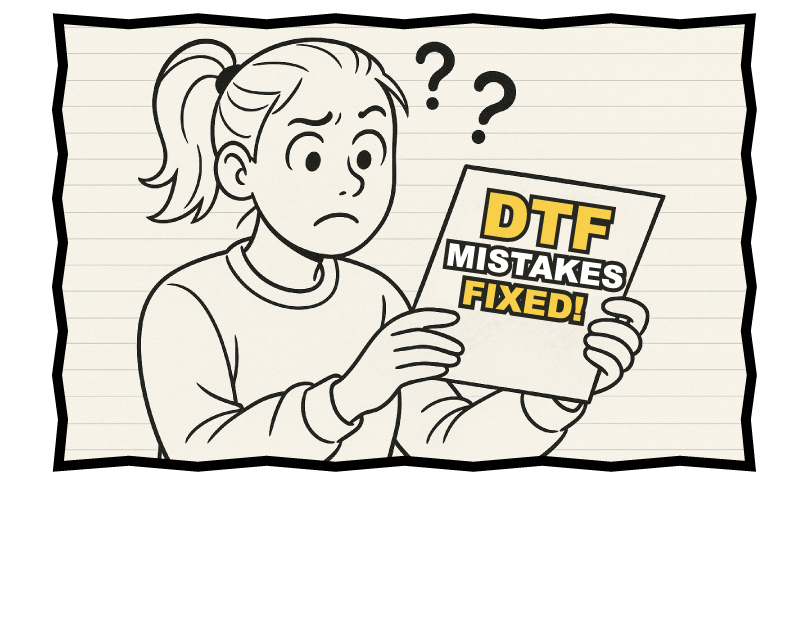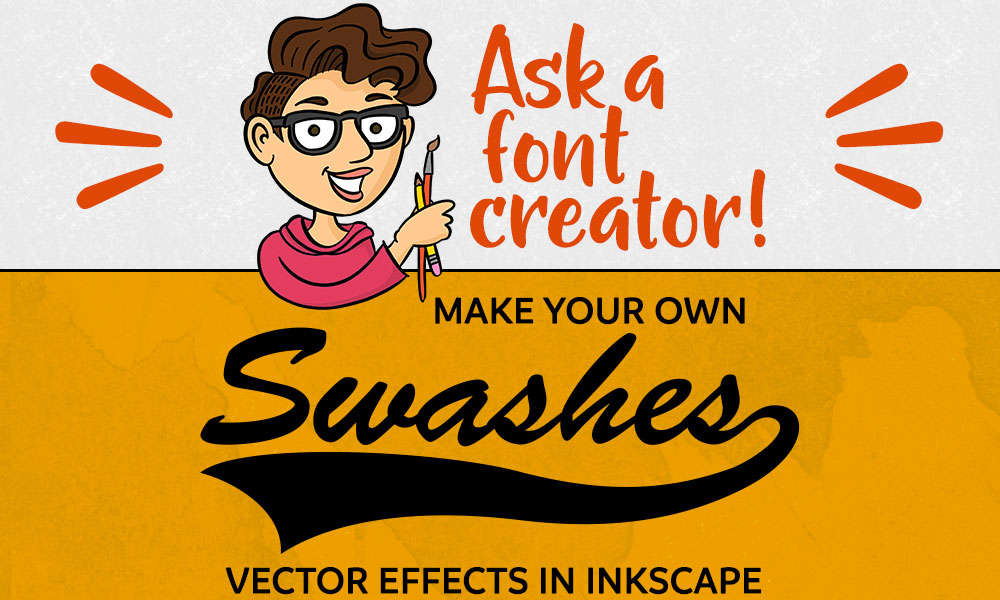
I have my artist/designer hat on again this week, to talk about book covers. I’m an avid reader (I have a personal goal to read 50 books this year, and in early July as of this writing, I’ve read 31), and I see a LOT of book covers.
I’ve also designed a few, though not as many as I’d like, since most of my designing time these days is spent on fonts. But on the plus side, I do get to make up fake book covers in promo images for some of my fonts.

Despite the old saying, “you can’t judge a book by its cover,” we all do exactly that every day. If there’s one thing that will make me decide not to even consider a book, it’s a bad cover. And with the self-publishing boom in the last 10 years, there are a lot more poorly-made covers out there.
Today we’re going to talk about fonts as they apply to book covers, but these lessons can apply to any instance where a font is used together with a picture.
Matching the mood and style of your font to the mood and style of the picture (and in this case, the subject matter of the book) will help make your designs far more interesting and attractive to the reader.
Let’s start by looking at some bad book cover examples. At the time of this article these books were all currently for sale at Amazon.

These covers all have multiple problems, but let’s talk about the fonts first. They’re all using common fonts that you could find on just about any computer, which is mistake number one.
As with any design, I always recommend staying away from the fonts supplied with your computer when it comes to your primary elements.
Yes, they’re free, but everyone is using them for everything, so your design starts out at a disadvantage – no matter how creative you are, it’ll have the look of something people have seen before.
These fonts also don’t match the mood or tone of the books. Algerian, used in Poison Pen, has a more western or turn of the century feel. Though I would still hate seeing it on a western book cover.
The serif font used on Condemned isn’t Times New Roman, but it might as well be. It’s a font you’d just as soon see on a quarterly report at work; it doesn’t fit the feeling of a thriller. And Broken Pride uses Impact, which (sorry, sorry, I know a lot of you like to use Impact) is edging into Comic Sans and Papyrus territory, it’s being used SO much.
Fonts aside, let’s take a quick look at the images used here. Can you guess what genre of book Broken Pride is? Would it surprise you to hear that it’s a romance/mystery? At least with a tombstone, bullet holes, and spilled ketchup, Condemned is pretty clearly a mystery/thriller.
And if you took the word “mysteries” off the front of Poison Pen, the clip-art silhouette people would make you think this was a book about kids playing sports.
Here are some more covers that have serious font issues, and also serious image issues.

Though the spider-lady is my absolute favorite thing.
Once again, the fonts are common and don’t fit the mood of the books. The images are cobbled together. Every single one of them could be improved with simpler images and fonts that match both the mood of the image and the genre of the book.
Despite Caught Between Two Worlds being a western romance, I wouldn’t want to see Algerian here either.
So now that we’ve seen some bad covers, let’s talk about the elements that go into a good book cover.
I’m going to create some quickie examples here. None of them are ready for publication, because a good book cover takes hours of work. But they’ll all show you how images and fonts, when selected to match the mood and genre of a book, can make your work attractive to readers.
And they’ll also show how simpler, cleaner design can help make your cover much more clear.
Side note: all of the images in my examples below weresourced fromUnsplash, a great sitefor free stock photos. In probably around 80% of my font promo images that include photos, those photos came from Unsplash.
First up, let’s tackle the concept of BORING FONTS. We’ll do a romance novel cover. Here’s an image I’ve chosen.

I like this image for a few reasons. Since thepeople are in silhouette, you don’t know exactly what they look like. I, personally, don’t like real-people faces on my book covers; I feel like I’m being shownexactly what the character should look like, instead of being able to form my own mental image of them.
I also like the color palette: complementary colors like orange and blue can be jarring, but when they’re toned down a bit and not as saturated, they can go very nicely together.
I also like that there isn’t any black or white here; those would be too sharp for a soft romance novel. And it gives me flexibility: by bumping the contrast and brightness of the image up or down, I could use either white or black text on it.
Let’s take our image and crop it to book cover size.

The standard size for an e-book cover is 1563x2500 pixels. Which sounds weird, but it scales to 5x8, which is a fairly normal size for paper books (in inches). So that’s the ratio we’ll use on all of these covers. I've also darkened the colors a bit, because I'm going to use white text.
When cropping a photo, I want to make sure I have good places to put the text – there’s both the author name and the title of the book to consider.
I like to put the author name either along the top or along the bottom, and there’s a nice empty area in both places here, which is nice. I like having the option, depending on where the title ends up.
I think the best place for the title is down below the couple’s hands, so their upper bodies and heads aren’t covered by text. So here we go:

Helvetica. Quite possibly the most popular font ever. And yet, it’s really boring here! It doesn’t give us any feeling about the book whatsoever. Is she happy about her fancy wedding? Is she sad? Anxious?
You might guess that this is a romance novel from the image and the fact that “fancy wedding” is in the title, but does that text make you want to pick it up and read it? Most likely not.
So let’s consider what other romance novels have in common, and apply those styles:

Ah, much better! I’ve used Samantha Script for the title, which definitely adds the “fancy” factor. I’ve paired it with Trajan Pro for the author name. (Wait, you may say: doesn’t Trajan Pro come pre-installed on a lot of computers? If you caught that, good eye!
But remember, I advised against using those pre-installed fonts for your primary elements. In this case, it’s Samantha as the star player, and Trajan is in a supporting role.
When you’re pairing a plainer font with a script, your use of a serif or sans-serif will often be influenced by how elegant the design is. Serif fonts, like Trajan, pair well with fonts like Samantha Script because they both have that elegance.
If you’d put a sans-serif here, it wouldn’t have worked as well, since sans-serif fonts can tend to have a more casual feel. (But not all the time, and we’ll get to that in the next example.)
Next up, let’s take a look at INAPPROPRIATE FONTS. We’ll do a mystery/thriller for this one.

I saw this image and immediately thought it would work for a mystery. Maybe this woman gets kidnapped, or is just running away. Either way, there’s definitely a mysterious feel.
You’ll also see a ton of night scenes used for the mystery and thriller genre covers, because presumably, thrilling and mysterious stuff happens at night.
Once again, let’s crop our picture to book cover size.

I’ve also used the magic of Photoshop here to remove the large reflective road signs from the area to the left of her head. They were way too bright and distracting.
I’ve taken a chunk of the gray sky and put it in there, and I’ve also taken a building from the other side of the picture and moved it over to fill in the space.
Now that we have our image, I’m going to put a blue filter over it to make things a little darker and gloomier, and then put my title in white:

And you immediately know that my font choice here is very, very wrong. I’ve used Amatic SC Bold (a very nice free font), but its handwritten feel is totally inappropriate for the mood of the book. This font would be more appropriate on a children’s book (and has, in fact, been used on many children’s books).
So let’s choose something a little more serious, and a little more menacing.

Here I’ve used Asfalto, another great freebie. Yes, it’s a sans-serif, which we just talked about having a casual feel. But as a sans-serif font gets taller and narrower, it startsto get more serious. Plus, the font’s built-in distressing adds to the mysterious feel.
I’ve also added some gritty texture over the photo, to help itmatch even better with the distressed text. And I’m using a couple of other sneaky tricks here: I’ve increased the tracking (the uniform space between the letters) in order to make the letters appear less cozy, which adds to the tension.
And I’ve laid the words out in a staggered formation, which also disrupts the eye and makes things feel a little bit uncomfortable. Which both add to the thriller element.
In the next two examples, I’m going to use the exact same image for two different book covers, and completely change the mood by just changing the font.
First up, our base picture.

You know, just a guy wearing a headlamp, walking around in the snow by himself. Like you do.
Let’s crop this down to book cover size.

Notice I’ve put the guy off-center, to add a little bit more visual interest – it’d be a bit boring if he were standing in the dead center of the cover. And I’ve put him over on the left side, because judging by the angle of his headlamp, he’s facing slightlyto the right.
When placing things with faces (people, animals, etc.) off-center, you almost always want them facing toward the larger space, with the smaller space at their back. If you do it the other way, it looks off-balance.
I chose this photo because it’s very flexible. Just looking at it, you don’t come up with one specific book genre. So that’s where our fonts come into play!

First up, science fiction. Just by adding a sci-fi styled font (in this case, Audiowide, another nice freebie), we immediately give the impression that this guy knows something. He’s out here in the field waiting for the alien ship to come down out of the starry sky.
Next up, we’ll change the font and the book title, but we’ll keep the color scheme and even the hazy glow effect around the title.

And it becomes a totally different book. Now it’s somehow hopeful and inspirational. Is he wishing on a star? Waiting for someone to come back to him? Meeting a lover in a secluded place?
The script font (the lovely Spumante) used here changes the tone completely.
Here’s my issue with both of these, though: neither one is a very exciting cover. They’re probably both decent enough to get people to read the blurb, to see if it’s something they’d want to buy.
But since the photo is vague in its tone, so is the cover even when a mood-specific font is used. It’s a good example of how title, image, and font all need to work together in order to make a cover really pop.
For this last one, let’s really go crazy. I’m going to use the exact same title and picture, but by using two different fonts in two different color schemes, we’ll get two totally different books!

This image was already tall and thin, shot in portrait instead of landscape, so there was very minimal cropping necessary. I’ve set the bonfire a little off-center (visual interest, again).
I already know on this one that the title will be in the black space up at the top, and the author’s name will go along the bottom below the fire.
Here’s our first cover.

I’m using a tall and narrow sans-serif. Remember, sans-serif fonts are more casual when they’re wider, but as they get more narrow, they get more serious. Marianina here is quite serious indeed.
I’ve also used a red and orange color scheme here. Not only does it go well with the color of the fire, but the red and orange both have a more serious vibe. Dangerous. Even a little bit bloody.
Overall, it lends a more threatening tone to the book. This is a thriller or a mystery, and clearly something happened at that bonfire.
Was it an accident, or was it murder? Will there be blackmail? All we know is, that one night would change their lives forever.
Now that you have all of that stuck in your head, let’s turn the whole thing on its ear.

Whaaaaaat? Now it’s a young adult coming-of-age book! What happened around that bonfire? A first meeting? A kiss? A Romeo and Juliet meeting between students at rival schools? Or maybe even … all of the above?
All we know is, that one night would change their lives forever!
In this version, we’ve made it a more fun color scheme (orange and teal make for an odd yet pleasing combination). I’ve swapped the serious font for handwriting fonts: Zesty Orange for the title and author name, and Westfalia for the one night line.
Handwritten caps are huge right now for young adult romances. Plus, I’ve changed the punctuation after “forever” from an ellipsis (which gave a sense of foreboding) to an exclamation mark (an indication of fun).
But once again, like with the dude out in the snow, since this picture is more generic, it’ll never catch the eye the way an image that suits the book’s genre would.
Even with a title like Bonfire Night, a photo should have more of the book's mood in it. Even if that means overlaying some other images. (But please, whatever you do, don't create a warrior spider lady.)
I hope this has given you a little insight into book covers, and helped with not just book cover design, but any project where matching the mood between an image and a font will make things POP!


DTF Troubleshooting Guide: How to Fix Common Problems & Get Perfect Results Every Time

Ask a Font Creator: Stitch Text Effect in Inkscape and Illustrator

Ask a Font Creator: DIY Swashes in Inkscape
By using our website you consent to all cookies in accordance with our cookie policy.
